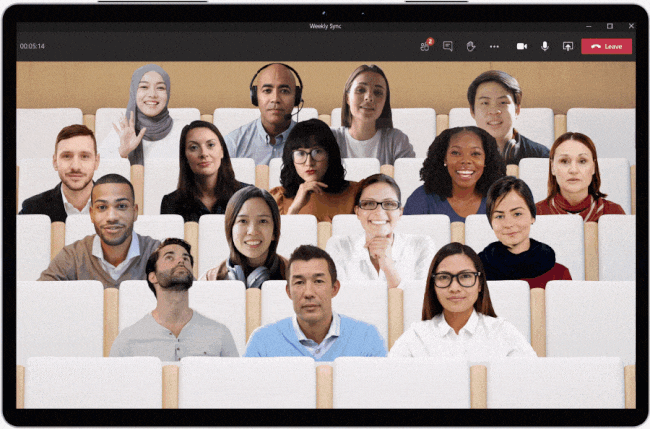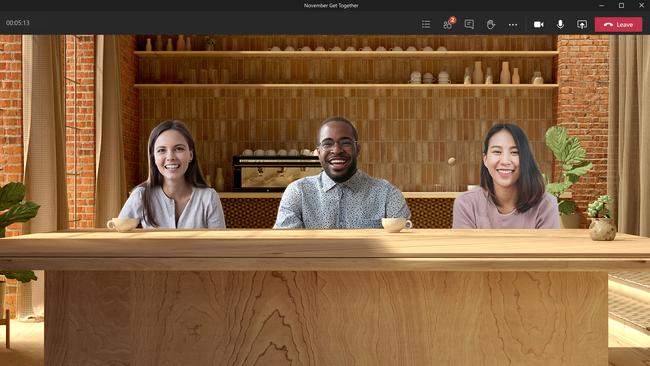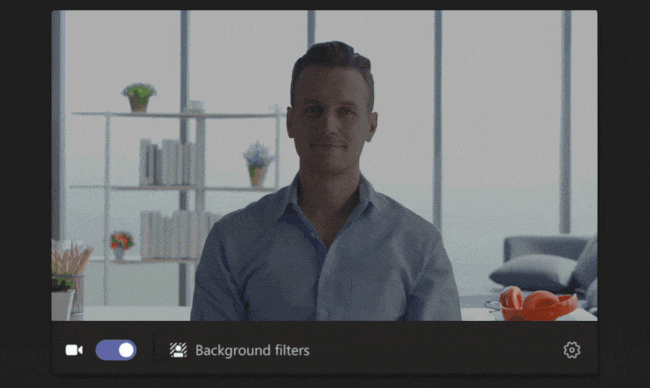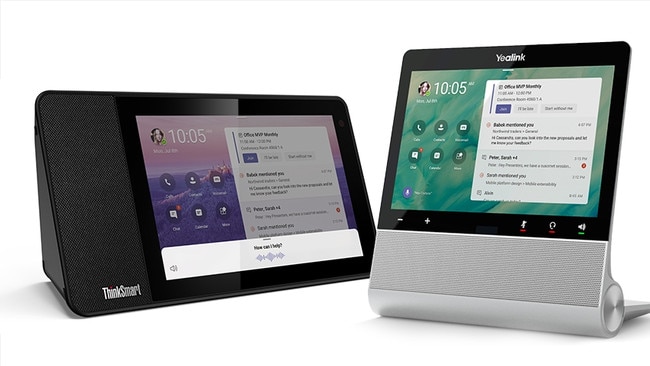Microsoft rolls out VR video conferences in a massive Teams upgrade
Microsoft has revamped its video conferencing to put people together in virtual rooms, as part of a massive overhaul of its Teams collaboration software.

Microsoft has revamped its video conferencing to put people together in virtual rooms, as part of a massive overhaul of its Teams collaboration software.
It’s added a new video conferencing tool called “together mode” as part of a raft of new features for what it calls “virtual collaboration”.
“Together mode is a new meeting experience in Teams that uses AI segmentation technology to digitally place participants in a shared background, making it feel like you’re sitting in the same room with everyone else in the meeting or class,” says Jared Spataro, corporate vice president for Microsoft 365 in a blog post.
He says participants can focus on other people’s faces and body language and pick up the non-verbal cues important to human interaction.
Instead of one-to-one video calls, or standard conference calls where participants appear as a small tile in a big lattice of dozens of participants, Microsoft is planning for people to hold brainstorming sessions and roundtable discussions, as if they were together in the same room. They will be able to chat over coffee around a table.
Mr Spataro says the new format will also make it easier for people to work out who is talking.
Microsoft says it will provide different “together mode” scenarios. It’s starting with an auditorium view which it says is rolling out now and will be available generally in August. Other views are in the pipeline.
It is not a surprise that Microsoft is ramping up its virtual reality offerings. It is already a big player in augmented reality with its HoloLens mixed reality headset.
In 2017, it made a major investment in VR with the acquisition of AltspaceVR which allows people from across the world to meet together in virtual environments for events such as language classes, parties, author book readings and music sessions.

Microsoft also recently announced “dynamic view”, designed for the more conventional format where participants appear separately as squares on the screen.
Meeting organisers can arrange the view so that specific participants appear side-by-side and it is adding a large gallery view of up to 49 people on the screen simultaneously.
It, like other video conferencing offerings, is adding virtual breakout rooms. Organisers can split meetings into smaller groups for brainstorming and discussion. This has proved a popular feature with rival Zoom, which became the darling of personal video conferencing sessions in earlier lockdowns during the pandemic.
Teams also is offering participants video filters. Before you join a meeting, you can adjust light levels and soften the focus of the camera.

It says managers, discussion leaders and teachers, will be able to add a new “reflect messaging extension” so that they can check how their team, employees or students are feeling about specific topics during the online meeting.
Getting this going will require a bit of work. Microsoft says IT administrators will need to install the extensions from well-known code repository site GitHub, which is now Microsoft owned. It’s providing a “message extension menu” for this.
Microsoft is also bringing its PowerPoint Live presentations to Teams, so speakers can deliver their PowerPoint offerings directly into a video calling environment.
Participants will be able to use emojis in Team meetings to react to speakers and there will be chat bubbles for discussions, live captioning, and the ability to create a transcription file of meetings in real time. The transcription file will be automatically saved in a tab as part of the meeting, says Microsoft.

Zoom too currently can create transcriptions of meetings through a collaboration with AI transcribing service Otter AI. It’s an increasingly popular tool.
Teams video conferencing will support up to 1,000 participants at a meeting and through an overflow view-only experience, up to 20,000 people can attend a single event online.
It announced whiteboard enhancements, a new tasks app which includes a planner, to-do list, and smart lists where tasks can be assigned across an organisation, suggested replies, and the addition of its personal assistant Cortana in Teams.
Microsoft is also rolling out desktop-sized “teams displays” which looks similar to recent video enhanced versions of Google Home and Amazon Echo. It says this will be useful for participants who don’t have other hardware options.
Microsoft says The Lenovo ThinkSmart View will be the first Microsoft Teams display to market. Yealink will offer one too. Microsoft Teams displays with Cortana will be available in the U.S. starting later this year. More details are here.
Video streaming speeds
The ability of video conferencing to provide decent resolution communications depends on several factors, including camera resolution, the compression algorithms of the software and internet speeds.
This week the Australian Competition and Consumer Commission released data collected during the pandemic that shows the location of servers in Australia affects performance.
“Video conferencing applications hosted in Australia connected more quickly than those hosted overseas”, says the ACCC report.
“Google Meet, Microsoft Teams, and Skype used Australian-based servers, and performed better due to lower latency, while GoToMeeting, Webex and Zoom recorded latency ten-times higher, or worse, due to their servers being located in Singapore, the Netherlands and United States respectively.”
Latency is the delay in receiving and responding to data and is dependent on the distance to servers where applications are hosted.
The ACCC says consumers in Western Australia enjoyed the lowest latency using Skype due to Skype having been hosted on local servers, while the slower test results for Google Meet and Microsoft Teams in WA are consistent with those servers being hosted on the East Coast.


